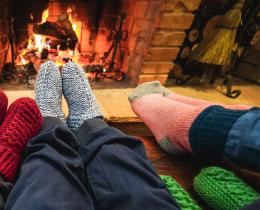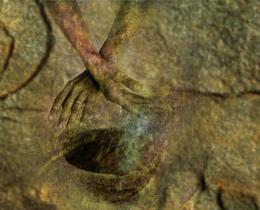When we are sick and in pain, we try to get well quickly. This is the natural response. We seek treatments to "fix" or get rid of our pain and symptoms so we can get back to our normal lives.
When the treatment doesn’t make the symptoms go away, and we begin to suffer physically and emotionally, our search for answers intensifies.
As a naturopathic physician, practicing holistic medicine and natural healing, people come to me hoping I can help them out of their pain and suffering. Some have been told, “nothing can be done.” They tell me, “I don’t know if you can help me; you are my last resort.” "I’m sick and tired of being sick and tired, I’ve got to do something—anything.”
They often feel frustrated, angry, afraid, hopeless, desperate, impatient, distrustful, and resistant. They’re worn out not just from the disease, but also from the battle to get well.
At this point, illness provides the opportunity to embark on a journey of self-discovery and healing. Instead of supporting continued efforts to get rid of their disease, a new approach and fresh perspective is needed and possible—an approach that asks new questions and allows a shift in attitudes and a new relationship with their disease.
Where's the Healing?
I don’t encourage people in perpetuating an attitude and a relationship with their symptoms that does not work and has not worked. Looking at symptoms as separate from the rest of our lives splits the body from the mind and spirit.
When we try to get rid of our pain and symptoms, we deepen the split. Even if we remove the symptoms, the underlying systemic cause and real message the disease is telling us may not have been addressed. Therefore only temporary relief is attained, and deeper healing isn't happening.
Seeing With New Eyes
Despair can turn into hope, impatience can turn into patience, fear can turn into courage and resistance can turn into acceptance.
In the willingness to look and see with new eyes, healing becomes possible. We begin to see and hear the messages of illness and symptoms. Our bodies are telling us something.
Learning to understand these messages can be the key that unlocks the door to recovery. Working with mind-body medicine we explore the question, "Where is the healing?" The crisis of illness thus becomes the vehicle for transformation and healing from within.
Creating a Healing Environment
A shift in one’s perspective allows a person to create a context for healing as much as any conventional therapy or treatment. This emotional, psychological, and spiritual context—the "healing environment"—may be more important to the healing process than any particular medicine or therapy. For there is no one therapy, treatment protocol, or sure-fire method for any particular chronic disease.
Every patient has a unique history and background for their disease, and healing is an individual, personal, and solitary journey. A holistic approach seeks to integrate and synergize the more clinical aspects of a treatment plan with the mind, emotions, attitudes, and beliefs. As people work to create this healing environment in their lives, they need guidance and support.
Shifting Roles for Doctor & Patient
Offering guidance and support during the journey of healing means the roles of the doctor and patient must shift. In addition to providing appropriate therapies, the doctor must also become a guide, teacher, coach, and advocate in helping patients learn from their illness.
The patient, in turn, takes responsibility for their illness and works in creating the proper environment for their healing.
By opening to the symptoms, listening to the illness's message, and believing healing and change are possible, the healing process is stimulated. Together, the doctor and patient form a healing relationship, an important component of the healing environment.
Healing Our Whole Lives
We carry the effects of growing up in dysfunctional families—resulting from physical and/or emotional abuse, abandonment, neglect, and/or enmeshment—with us in our bodies and our lives. Often the childhood wounds we carry are held in the body and express themselves in illness and disease.
We may only start to recover when we face our truth and feel the unexpressed emotions and feelings that have been buried deep inside. We have to reexperience and release these long-held emotions and support our healing of mind, heart, body, and soul.
Mind-body medicine techniques and therapies help us make the healing connections between our biography and our biology, between our past and our body, mind, and spirit.
Many people are involved in their personal journey to finding their true self and healing the wounded child inside. They are discovering and experiencing that releasing anger can help heart disease; healing fears and anxieties can help asthma; healing the pain of resentment can help a person with cancer; freeing the guilt and shame of childhood abuse can help with irritable bowel syndrome; and dealing with stress in a marriage can help heal arthritis.
The importance of the mind-body connection is sometimes dramatically obvious. For example, a woman came to me with rheumatoid arthritis in her hands which had gotten progressively worse over a 3-year period. Her increasing doses of steroidal anti-inflammatory drugs did not resolve her pain and she faced the near-term prospect of surgery.
After guiding her in diet changes and prescribing supplements (vitamins, minerals, herbs, and homeopathics), we then explored her stress and deeper emotional issues. She was still clinging to the grief and fear from the sudden death of her husband to whom she was married for 33 years. Her arthritis symptoms began not coincidentally, soon after his death. She hadn't been able to fully grieve and was also very fearful and guilt-ridden about establishing new relationships and dating three years later.
She needed to let go in order to move on with her life. By supporting her in releasing her suppressed feelings and emotions, and in conjunction with natural therapies and a referral to a family therapist, she was able over time to avoid surgery and gradually reduce her dependency on toxic drugs. Today, her hands are healed and she is off medication.
By facing and embracing the truth of our lives which may be manifesting in our "dis-ease," pain, grief, fear, and toxic shame, we can heal not just our symptoms, but our whole being.



